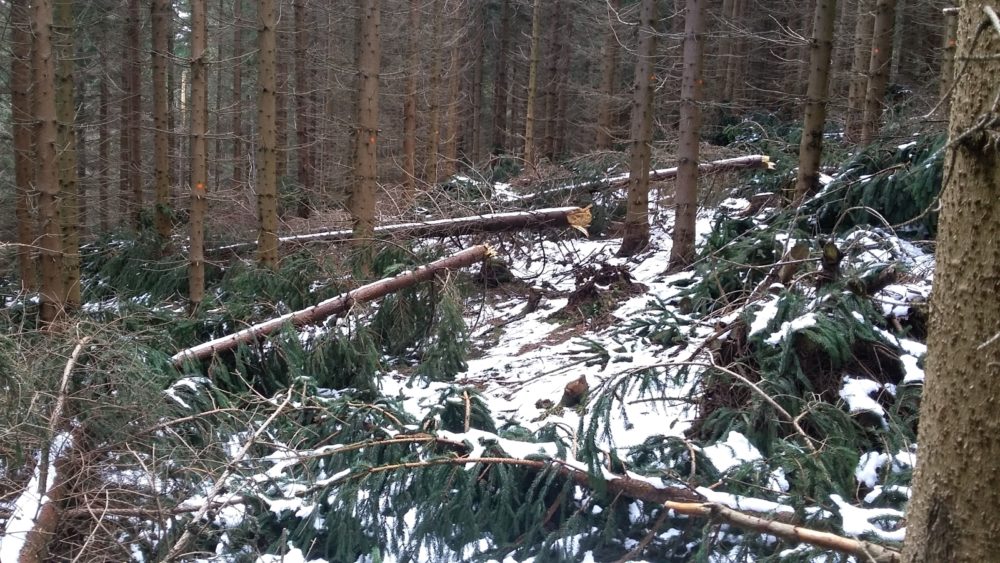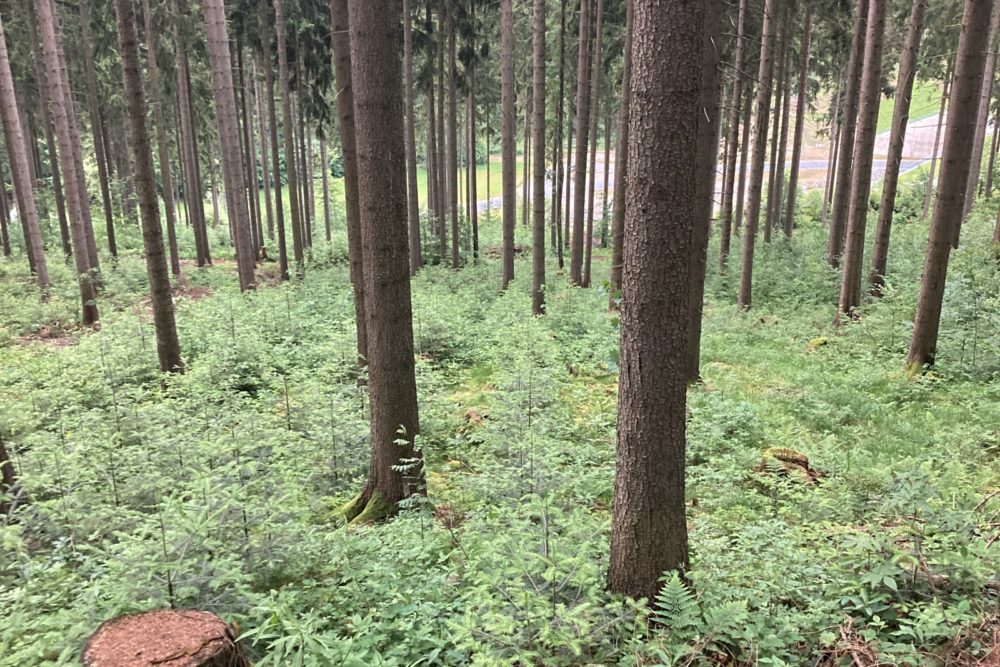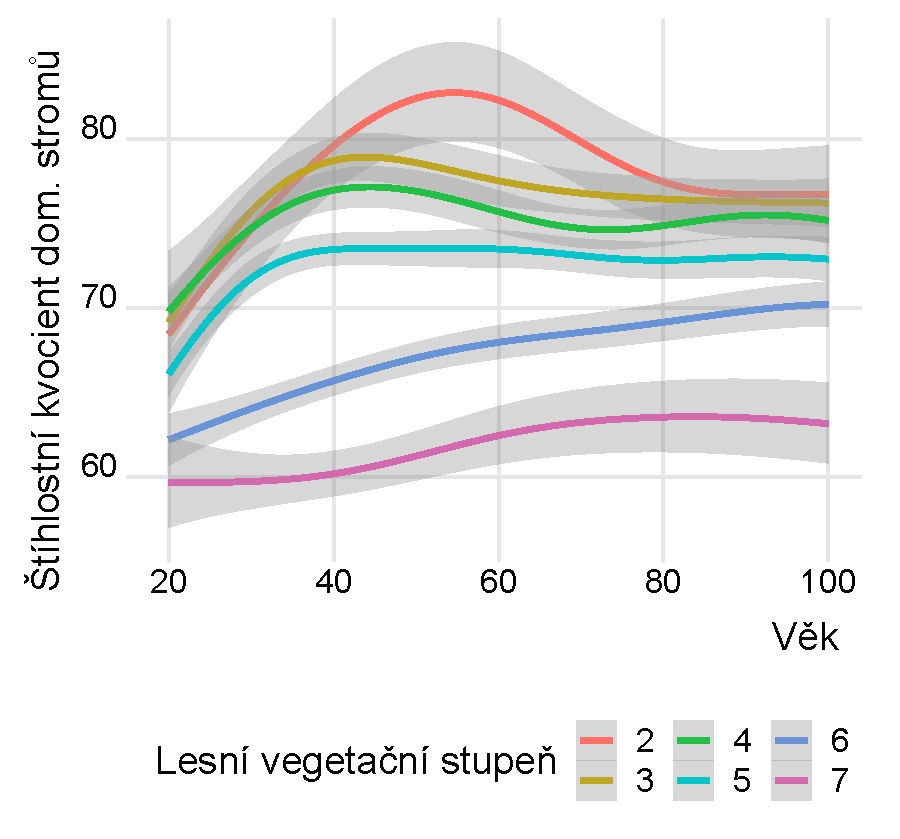How can we reduce the risk of widespread disintegration of spruce forests?
Norway spruce has been extensively planted in production forests across Central Europe, thriving in various natural conditions. However, it is often vulnerable to damage from both abiotic and biotic factors when it grows outside of its ideal habitat. In areas with significantly different conditions, such as higher temperatures and lower precipitation than what is typical for spruce, there is only a short time frame to address and improve this unfavourable situation through adaptation measures.
 Photo: When forests with spruce are not tended to as often, the forest stands become thinner, which increases the risk of them being damaged or uprooted by snow and wind, especially in lower and middle locations. This prevents them from gradually and successfully transforming. Research station (RS) Opočno archive
Photo: When forests with spruce are not tended to as often, the forest stands become thinner, which increases the risk of them being damaged or uprooted by snow and wind, especially in lower and middle locations. This prevents them from gradually and successfully transforming. Research station (RS) Opočno archive
In addition to quickly changing the species composition through clearcutting and planting target or preparatory tree species, another method can be used, especially in younger spruce stands. This involves supporting the stability of these stands through appropriate management, which extends the time available for their transformation. In well-prepared stands with increased stability, underplanting or interplanting with target climax tree species (such as silver fir and European beech) or other non-grazing economic methods can be better implemented.
In order to properly establish such procedures, it is important to consider the various local conditions that can impact the growth and development of forest stands. That’s why researchers from FGMRI (VÚLHM, v. v. i.), Research Station Opočno, focused on analysing the mechanical stability of spruce stands in the Czech Republic at various elevations. They used data from the National Forest Inventory (NIL I) to study the relationship between tree height and total thickness ratio (slenderness quotient) and age in different forest vegetation areas (LVS).
 Photo: In spruce stands with sufficient stability, their transformations can be carried out more easily, e.g. by underplanting silver fir and European beech; RS Opočno archive
Photo: In spruce stands with sufficient stability, their transformations can be carried out more easily, e.g. by underplanting silver fir and European beech; RS Opočno archive
It is the slenderness quotient (H/D) that is a proven parameter of the individual mechanical stability of a tree. High values (thinning) indicate an unstable stem with a high risk of damage (breakage), especially by snow, but also by wind. On the other hand, trees with lower values of the coefficient (falling stems) are highly stable and able to resist the effects of these harmful environmental factors. The investigation focused on the dominant trees (100 thickest individuals per hectare) which form the framework of the stand. Their stability is crucial concerning the risk of large-scale decay.
The results indicate that the slenderness ratio of dominant spruce individuals varies among different forest vegetation areas. However, in all forest vegetation areas, there is a natural tendency for the slenderness ratio to initially increase and then decrease at an older age, typically around the middle of the rotation period.
In general, it can be said that higher locations also represented higher stability of dominant trees, i.e. lower H/D values. In the conditions of the 7th and 6th LVS, the slenderness quotient did not exceed the value of 65 and 70, respectively. On the contrary, an initial steep increase in H/D values was found for the locations of the 2nd to 5th LVS. Thus, the lowest stability was detected in the 2nd LVS with the culmination of H/D of dominant trees at a value of 83 at the age of 55 years.
 Graph: Model of the development of the slenderness quotient of dominant trees according to forest vegetation areas; RS Opočno archive
Graph: Model of the development of the slenderness quotient of dominant trees according to forest vegetation areas; RS Opočno archive
It is evident that in spruce stands located in lower to medium elevations, the most important period for individual stability development is up to 40 years of age when the H/D values naturally increase significantly. This confirms the importance of intensive care (tending) before reaching this age phase.
When comparing acidic and nutrient-rich habitats, researchers found higher H/D values in acidic habitats, particularly up to the age of 50–60 years. The better conditions in nutrient-rich habitats seemed to result in greater thickness growth compared to height growth. However, further detailed studies are needed to differentiate habitats more precisely in terms of their supply of nutrients and water.
More detailed information is available in the full version of the article published in the journal Forests (DUŠEK, D. – NOVÁK, J. – ČERNÝ, J.: The mechanical stability of pure Norway spruce stands along an altitudinal gradient in the Czech Republic, https://doi.org/10.3390/f14081558) or you can contact the authors directly at FGMRI (VÚLHM, v. v. i.).
Prepared by: Ing. Jiří Novák, Ph.D., FGMRI (VÚLHM, v. v. i.), RS (VS) Opočno, e-mail: novak@vulhmop.cz
